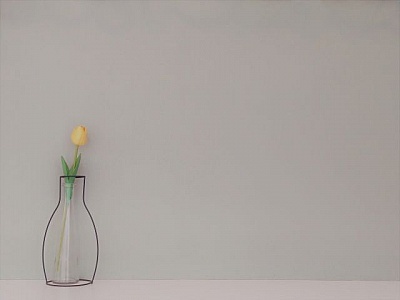Within the realm of home decor, the pursuit of creating not just living spaces but curated environments represents a sophisticated art form. The meticulous selection of furnishings, the thoughtful arrangement of decor elements, and an adherence to design principles collectively contribute to the artistry that is home decor. This exploration delves into the professional intricacies of elevating home decor into a refined expression of personal style, emphasizing the orchestration of placement and the fusion of aesthetics to craft visually compelling and harmonious living spaces.
The Artistry of Home Decor
Home decor, as a form of artistic expression, transcends the mere act of embellishing interiors. It embodies the artistry of transforming a space into a narrative—a visual story that reflects the inhabitants’ personality, tastes, and aspirations. Each piece of furniture, every color palette, and all decor elements become integral brushstrokes on the canvas of a home, contributing to the overall composition of a functional and aesthetically pleasing environment. The essence of home decor artistry lies in its ability to merge function and style seamlessly.
Harmonious Fusion: Crafting an Eclectic Narrative
The true artistry of home decor manifests when diverse styles and elements come together in harmonious fusion. While specific design styles may provide the overarching theme for a space, the strategic introduction of varied elements introduces layers of visual interest. Envision a modern living room adorned with sleek, contemporary furnishings, punctuated by carefully chosen vintage accents or a collection of bespoke art pieces. The outcome is a balanced and dynamic aesthetic—a carefully curated fusion of styles that captivates the observer.
Color as a Palette: Setting Emotional Tones
Color, wielded as a potent tool in the home decor palette, possesses the ability to set emotional tones within a space. Each hue carries its own unique resonance, and the artful use of color can evoke specific moods and atmospheres. Picture a serene bedroom cocooned in soft blues and neutrals, creating a tranquil retreat, or a vibrant kitchen pulsating with energetic yellows and reds. The mastery of color involves not only selecting a pleasing palette but also understanding the interplay of colors to construct a visual narrative that complements the desired ambiance.
Functional Art: Furniture as Design Statements
Furniture, beyond its utilitarian role, assumes the mantle of functional art within the home. Each piece becomes a design statement contributing to the overall aesthetic. Imagine a living room where a bespoke sofa, chosen for its design and upholstery, serves as the focal point. The strategic placement of furniture not only defines functional zones within a room but also adds to the visual narrative of the space. Homeowners and designers alike can leverage furniture as a means of expressing their unique style, whether through minimalist designs, mid-century modern pieces, or opulent, handcrafted selections.
Spatial Harmony: The Choreography of Balance
Achieving spatial harmony involves a choreography of balance and proportion. Each element within a space contributes to the overall composition, and its placement should be purposeful to achieve visual equilibrium. Visualize a dining room where a well-proportioned dining table is complemented by thoughtfully chosen chairs, creating a balanced and inviting setting. The principles of balance and proportion guide the observer seamlessly through a space, ensuring that no single element overwhelms the visual experience.
Artisanal Elegance: The Beauty of Craftsmanship
In the pursuit of elevating home decor to an art form, the inclusion of artisanal and handcrafted elements adds a layer of sophistication and authenticity. Handcrafted objects and bespoke furnishings showcase craftsmanship, infusing a sense of individuality into a space. Whether it’s a meticulously carved wooden coffee table, a locally crafted ceramic vase, or custom-designed lighting fixtures, these artisanal touches not only contribute to the aesthetic but also reflect a commitment to authenticity in design.
Stylish Arrangements: Precision in Placement
The art of home decor extends beyond individual elements to encompass the precision of their placement. This meticulous artistry requires consideration of visual weight, height, and relationships between objects within a space. Picture a well-styled bookshelf where books seamlessly coexist with decorative objects, creating a visually dynamic arrangement. The strategic placement of artwork, the thoughtful arrangement of throw pillows, and the positioning of rugs—all contribute to the overall aesthetic balance of a room.
Gallery Walls: Curated Visual Narratives
The concept of a gallery wall epitomizes the convergence of home decor and artistry. This trend involves arranging a collection of artwork or framed photographs on a wall, creating a curated display that reflects the occupant’s personality and interests. A gallery wall is not merely an assemblage of frames; it is a carefully curated narrative composed of pieces that tell a visual story. The arrangement may be symmetrical for a formal look or eclectic for a more dynamic and personalized touch.
Textiles as Texture: Multi-Sensory Layers
In the realm of home decor, textiles play a pivotal role in adding texture and depth to a space. The artistry lies in the layering of textiles—plush rugs, luxurious throws, and thoughtfully selected cushions—to create a multi-sensory experience. Envision a cozy reading nook adorned with a sumptuous throw, textured pillows, and a soft rug underfoot. The juxtaposition of different textiles not only adds visual interest but also enhances the tactile appeal of a room.
Lighting as Ambiance: Sculpting with Light
The art of home decor extends into the realm of lighting, where fixtures serve as both sources of illumination and sculptural elements that shape the ambiance of a space. Pendant lights, chandeliers, and strategically placed floor lamps contribute to the overall aesthetic by casting light and shadow in calculated ways. The choice of lighting fixtures becomes a form of artistic expression, influencing the mood and character of each room.
Conclusion
In the nuanced world of home decor, the act of transforming living spaces into a form of art requires a meticulous understanding of design principles, a discerning eye for aesthetics, and a thoughtful curation of elements. Home decor, when approached as an artistry, becomes a symphony of color, texture, and arrangement—a manifestation of personal style and expression. The fusion of styles, the strategic placement of furniture, the inclusion of artisanal touches, and the artful arrangement of decor elements collectively contribute to the creation of a home that is not only visually captivating but also a reflection of the occupant’s unique sensibilities and artistic preferences. In this dance of design, every brushstroke, every element carefully placed, becomes a part of the intricate masterpiece that is the art of home decor.








No Comment